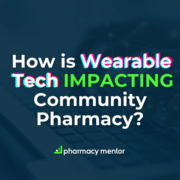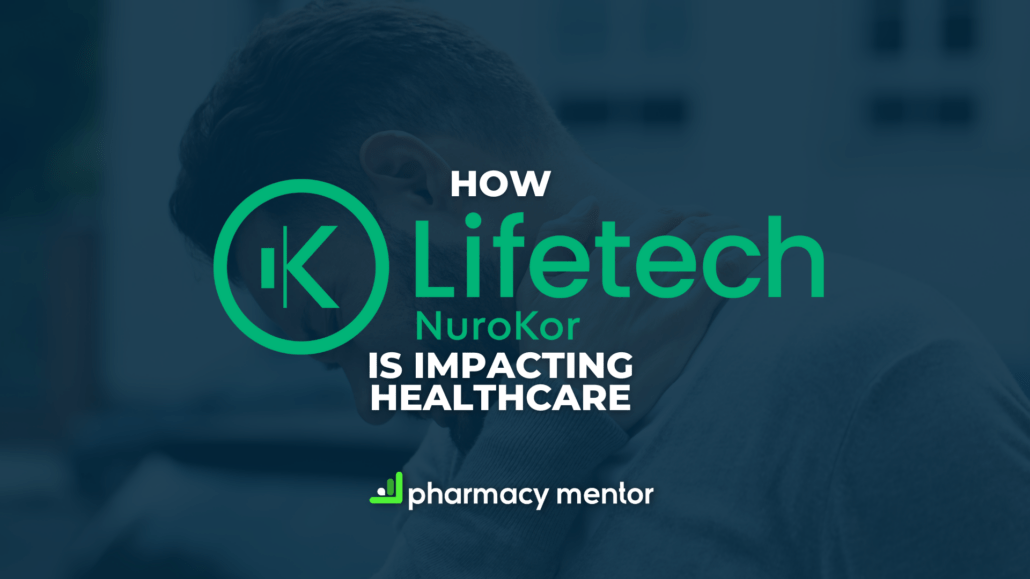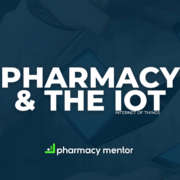The surge in popularity of wearable technology extends well beyond retail Smartwatches. The technology continues revolutionising the way people lead their lives, and it has significant potential for revolutionising the healthcare industry. Community Pharmacies in the United Kingdom and beyond are no exception.
Wearable Technology in Numbers
- 216 million global smartwatch users (Statista)
- 1%/Year – The increase in growth of the population who own smartwatches in the US (Insider Intelligence)
- 13 – Different categories of wearables. Smartwatches are almost synonymous with wearables, but there’s far more to wearables than watches. (Tesla Suit)

The number of connected wearable devices worldwide has more than doubled in the space of three years, increasing from 325 million in 2016 to 722 million in 2019. The number of devices is forecast to reach more than one billion by 2022.
Retail Opportunities for Pharmacies
Before we dive into the practical applications of how wearable tech can affect pharmacy’s day-to-day healthcare operations, a word on retail.
The vast majority of pharmacies in the UK still double-up as a retail shop, or a convenience store, for our American readers. Unless you’re based in a really remote location, you’re competing for little crumbs with multiple fish in the same pond as you.
Dress for the role you want, not the one you have
The way we change the public perception of what a Community Pharmacy is and does is by doing different things. People don’t visit pharmacies for cheap plastic toys.
If Pharmacies became outlets for Wearable Health technology, suddenly the advice of the professionals in-store adds value, giving you a huge advantage over online retailers who can’t offer that same tailored advice.
Take NuroKor LifeTech, as a working example, the wearable technology which manages and relieves Chronic Pain, amongst other things.
By offering continuous pain management consultations, having live demonstrations and group Q&A sessions on Living with Chronic Pain, you’re providing engaging options that add value to your community.
These products make sense for a pharmacy.
Applications of Wearable Technology in Medication Management
Wearable tech in medicine is still a new field. There’s still a lot of research being done, figuring out the best way for these devices for monitoring meds.
That said, the potential benefits of using them in the following areas don’t require much in the way of advancement of the technology.
- Insulin – Monitoring blood glucose levels in people with diabetes and provide real-time feedback on insulin dosage and glucose levels.
- Cardiovascular – Wearable devices can be used to monitor heart rate, blood pressure, and other cardiovascular indicators.
- Pain management – Monitoring pain levels (through specific physiological responses) and monitor the effectiveness of pain management medications, helping doctors make more informed treatment decisions.
- Mental health – tracking patients’ mood, sleep patterns, and other indicators of mental health.
- Asthma medications – Monitoring a patient’s respiratory rate, oxygen saturation, and other indicators of asthma control.
The main area for improvement is the integration of data into healthcare practice, as well as advancements in, and adoption of, the Internet of Things (IoT) into pharmacy practice.
Remote Healthcare, revolutionised with data
One of the most significant ways in which wearable technology could impact community pharmacies is through the increased use of telemedicine.
We’re already seeing an increasing number of pharmacy clients requesting Online Doctor features adding to their websites. This will continue growing, and remote consultations along with it.
Wearable devices such as smartwatches and fitness trackers collect and transmit data on a patient’s health, allowing for remote monitoring and consultation with healthcare professionals. This enables community pharmacies to provide more personalised, real-time care to patients, and potentially reduce the need for in-person visits.
Thinking about the practical application of this with elderly patients with mobility issues is incredibly positive.
Wearable technology improves Chronic Condition Management
Another area in which wearable technology’s impact on community pharmacies will continue to grow, is in the management of chronic conditions.
Wearable devices can track vital signs such as heart rate and blood pressure, and provide alerts for any abnormalities.
This enables the proactive management of patients with chronic conditions and reduces the risk of potential complications.
Prevention is always better than a cure.
Improved Adherence with Reminders & Alerts
Wearable technology can also have a positive impact on medication adherence.
Smartwatches, for example, can be programmed to remind patients to take their medication at the correct time, and can even send notifications to the patient’s healthcare provider if the medication is not taken as prescribed. This improves patient outcomes and reduces the number of hospital readmissions.
Furthermore, wearable technology can also help community pharmacies to provide more efficient and convenient services. For example, by using wearable devices, patients can order their prescriptions and have them delivered to their home, reducing the need for them to visit the pharmacy in person. Additionally, some wearables can integrate with the electronic prescriptions system, making it easier for the pharmacy to manage and track prescriptions.
How far away is Wearable Tech from full integration into Pharmacy?
It’s important to note that the adoption of wearable technology in community pharmacies is still in early stages, and there are some challenges that need to be addressed.
Data & Privacy Concerns
One of the main challenges is data security and privacy, ensuring that patients’ personal and medical information is protected.
Making sure the technology is reliable and accurate, and that the data collected is of sufficient quality for clinical decision-making is another critical factor.
What’s to stop someone lending their smart device to a friend in order to qualify for POM’s? Of course, there are workarounds in our current system too, but this isn’t an immediate fix with wearables in their current guise either.
Investment Costs & Priorities
Another challenge is the cost, as wearable technology is expensive, if you were using it for every patient. Of course, the savings made, margins widening and revenue generating implications of the technology mean it’s a sound investment. But long-term thinking and strategy is a rare bird in healthcare. So it may be some time before widespread adoption.
Diagnosis of Wearable Tech in Pharmacy
In conclusion, wearable technology has the potential to revolutionise the way community pharmacies in the United Kingdom provide care to patients. We’re talking years not months, but it’s likely on the way.
The technology enables remote monitoring, improved management of chronic conditions, and improved medication adherence.
However, the adoption of wearable technology in community pharmacies is still in early stages, and there are challenges that need to be addressed, such as data security, cost, and reliability.
As always, Community Pharmacies should be ready to adapt.
Interested in digitising your pharmacy business? Book in a consultation call with our Diagnose and Prescribe team.
Enjoyed this article?
Sign up for our Newsletter below for more Pharmacy Growth Insights, trends, and comparison guides, and never miss an article.








